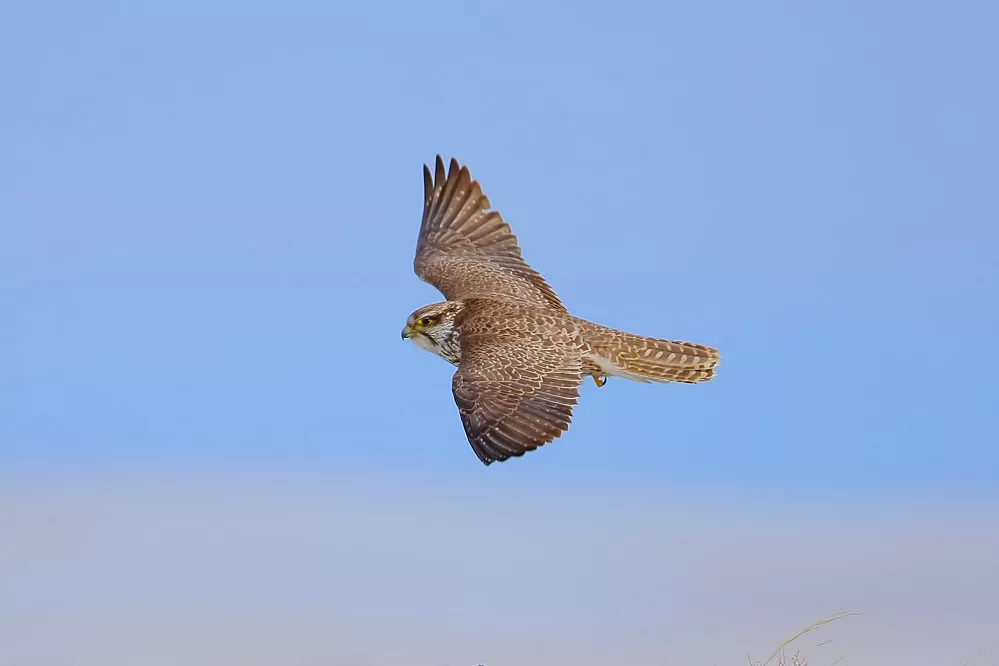Saker falcons (Falco cherrug) are majestic raptors renowned for their remarkable speed and agility. They occupy a wide range of habitats across several continents, making them a globally distributed species. This article aims to provide a comprehensive overview of the habitat preferences and distribution patterns of Saker falcons, shedding light on their ecological requirements and the factors influencing their presence in various regions.
Geographical Range:
Saker falcons have a vast distribution range spanning across Europe, Asia, and the Middle East. They are primarily found in the following regions:
Europe: Saker falcons breed in parts of Eastern Europe, including Hungary, Slovakia, Romania, and Bulgaria. They are also known to inhabit certain regions of Russia.
Asia: Saker falcons are widespread across the Asian continent. They are found in countries such as Kazakhstan, Mongolia, China, India, Pakistan, Afghanistan, and Iran.
Middle East: Saker falcons are known to occur in the Middle Eastern countries, including Turkey, Iraq, Syria, Jordan, and Saudi Arabia.
Preferred Habitats:
Saker falcons exhibit a remarkable adaptability to a range of habitats, with their distribution influenced by factors such as food availability, nesting sites, and climate. While they are known to inhabit diverse landscapes, they show a preference for the following habitats:
Steppe and Grasslands: Saker falcons thrive in open grassland ecosystems, such as steppe regions and semi-deserts. These habitats provide ample opportunities for hunting their primary prey, including small mammals and birds.
Mountainous Areas: Saker falcons can also be found in mountainous regions, including high-altitude plateaus and rocky slopes. They utilize cliffs and steep terrain for nesting and have been observed in the Himalayas and Altai Mountains.
Wetlands: Some Saker falcon populations frequent wetland areas, including marshes, river valleys, and coastal regions. These habitats support a variety of water-associated prey species, contributing to the falcons’ foraging success.
Nesting Sites:
Saker falcons typically nest on cliffs, rock ledges, or in trees. They tend to choose locations that provide protection from predators and offer good vantage points for monitoring their surroundings. In areas where natural nesting sites are scarce, Saker falcons may use artificial nest platforms or adapt to nesting on man-made structures such as pylons and buildings.
Migration:
Migration patterns of Saker falcons vary depending on the region and subspecies. Some populations are migratory, undertaking long-distance journeys to access favorable breeding or wintering grounds. For instance, Saker falcons from Central Asia migrate southwards during winter to regions including the Indian subcontinent and the Arabian Peninsula. On the other hand, sedentary populations reside in their breeding areas year-round.
Conservation Status and Threats:
Saker falcons face various conservation challenges due to habitat loss, illegal trapping for falconry, electrocution on power lines, and pesticide exposure. These factors have contributed to their declining populations in several regions. Recognizing the importance of conserving this species, international efforts are underway to address these threats and promote sustainable falconry practices.
Conclusion:
Saker falcons exhibit a broad distribution range, occupying diverse habitats across Europe, Asia, and the Middle East. Their adaptability to different environments, from open grasslands to mountainous areas, contributes to their survival and success as a species. Understanding their habitat preferences and distribution patterns is crucial for implementing effective conservation strategies to protect this majestic falcon and its habitats for future generations.
Related topics:
- Saker Falcon vs Gyrfalcon: How to Tell Them Apart
- How fast is a Saker Falcon?
- What is a Saker falcon?


 Facebook
Facebook  Instagram
Instagram  Youtube
Youtube 